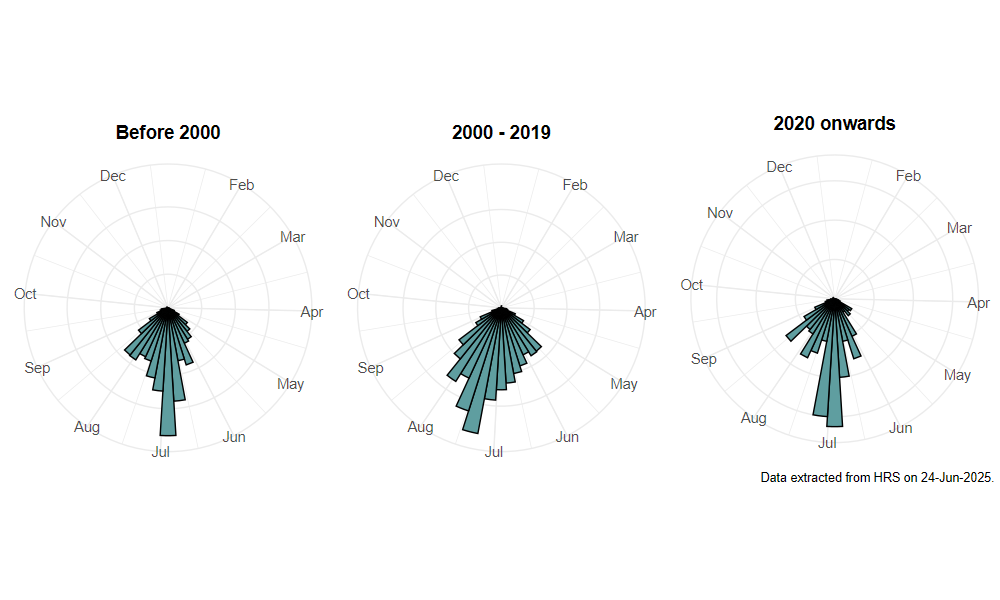Paragus haemorrhous Meigen, 1822
Identification
Identification difficulty = 3. ![]()
![]() according to Ball & Morris, 20241
according to Ball & Morris, 20241
Biology
The larva feeds on a range of ground layer and arboreal aphids. Adults are generally found resting on, or hovering above, bare ground along tracks and paths in a variety of situations including grassland, sandy heath, dunes and coastal cliffs. They can occasionally be seen visiting flowers. Males patrol sunny patches and stands of flowers.
Flight period
The following plots show the number of unique records per week excluding those reported to be of immature stages.

Distribution
Much the commonest member of the genus, but probably overlooked by many recorders. It is perhaps most frequent on chalk grassland in southern England, and in coastal habitats all around southern Britain. It is scarcer elsewhere, but with records extending to northern Scotland.

Trends
The following plots show the Frescalo TFactor vs year and a map of the rescaled frequency (all records) for the species.
-
Ball, S., & Morris, R. (2024). Hoverflies of Britain and Ireland. WILDGuides (3rd ed.). Oxford: Princeton University Press. ↩